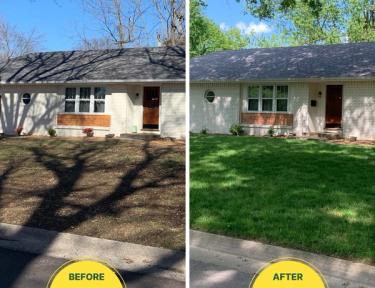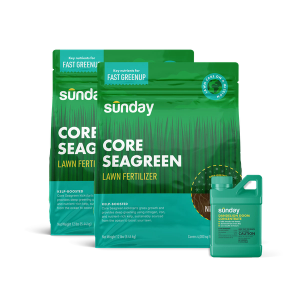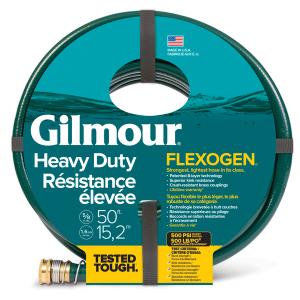After our lawns have endured months of cold and sometimes snow, it’s finally the beginning of spring. And with that comes spring greenup.
What is spring greenup?
Simply put, it's when your lawn turns green again in spring!
It typically occurs when temperature and light conditions are favorable for growth again, and grasses come out of winter dormancy.
Lawn greenup depends on your location
- Warm-season grasses in southern lawns, such as St. Augustine, Zoysia grass, and Bermudagrass, tend to green up first, from February to March. They'll need temperatures consistently above 60-69 degrees F.
- Cool-season grasses in northern lawns (fescues, bluegrass, and ryegrass) green up from March through April into May. They require average temperatures to remain consistently above 40-49 degrees F.
How to green up your lawn fast
Remove debris
Kick off your spring season by clearing away leaves, furniture, and other debris. This simple step prepares your lawn for fertilizer, weed control, and most importantly, seeding.
Bonus? It allows sunlight to penetrate the soil, warm it up, and encourage grass to grow, setting the stage for a faster green up.
Apply iron-rich fertilizer
Applying liquid iron-powered fertilizers helps promote photosynthesis and deep greening of grass blades.
How iron fertilizer works
Iron helps green your lawn's grass blades. This allows your soil to warm up faster, accelerating growth and greening your yard.
undefined
- 20-0-1 NPK liquid lawn fertilizer
- Iron citrate for faster greenup
- Promotes stress resilience
- Made for any lawn
- Zero pesticides
Sunday's high-iron fertilizer, Iron Boost, is made from Iron Citrate—a key ingredient that offers the fastest greening from liquid fertilizer.
Bonus? The formula promotes healthy early grass growth with lower nitrogen levels, improves stress resistance, and corrects soil iron deficiencies.
Encourage more sunlight
Trim trees and shrubs to reduce shade.
More light means more warmth, significantly speeding up your lawn's spring greenup.

Overseed early spring grasses
If you're planting new areas or overseeding, opt for grass species known for their cold hardiness and earlier spring greenup. This can help make your lawn fill in faster and appear greener and thicker in early spring months.
Sunday's green up-ready
Water deep and mow high
Watering correctly and mowing grass at the correct height are our top care actions for growing greener, healthier grass.
Watering deeply helps grass roots grow deeper, while proper mowing encourages grass to spread and thicken across the lawn. Here's what to do:
- Water deeply and infrequently. This means about 1-3x per week for about 30 minutes each session—let natural rainfall do the work for you when possible.
- Mow at the right height. Cut cool-season grasses to about 3-4 inches and warm-season grasses to about 2-3 inches. Use our mowing height chart for the best results!
What can affect spring greenup

- Grass species and variety: Some species and varieties of grass naturally green up slower or faster than others.
- Temperature fluctuations: Green up is heavily influenced by daytime and nighttime temperatures. Unexpected temperature drops can harm new growth and postpone spring greenup.
- Moisture levels: Lack of and excess water can slow the greenup process. Lawn moisture levels are key for a healthy spring.
- Light exposure: Sunny lawns will green up more quickly than those in the shade, which stay cold or covered in snow and ice longer.
- Heavy traffic: Lots of early foot activity can stress the grass, delaying its greenup. Minimize heavy activity on the lawn, especially when it's frosted over in early spring.
Sunday Tip:
Grass growing closer to the pavement will likely green up quicker because the heat from the pavement will warm the surrounding soil.
Let's get growing
Our lawn engine uses satellite data to map out your lawn size and determine things like average rainfall, common weeds, and pest activity.



















